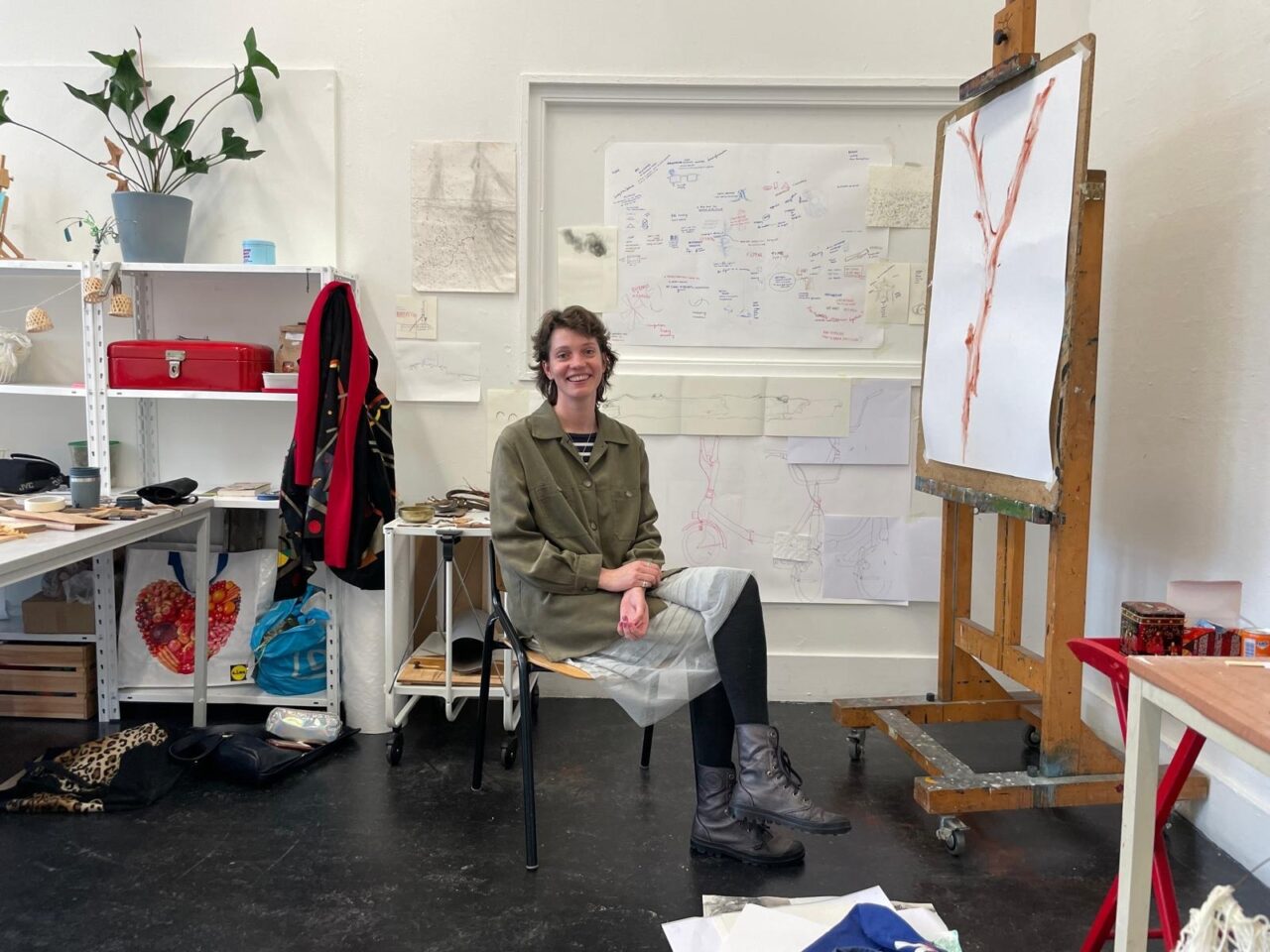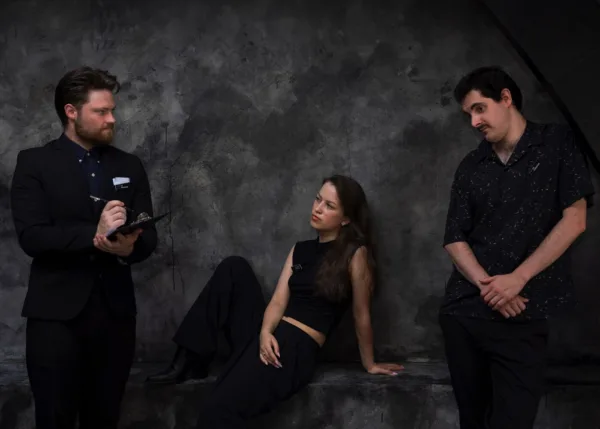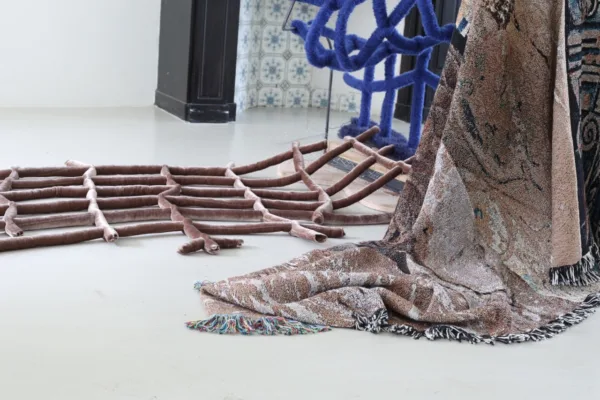Imagine working as a study advisor at the University of Amsterdam, helping students navigate their careers while quietly questioning your own path. Art had always appealed to you, but you never believed you could actually do something with it. That was also true for Sanne Berbé. She is now a second-year
How did you find your way to Amalgam?
After studying History in Utrecht, I interned at the Triodos Foundation in sustainable development. I then completed a master’s in Environmental Governance and started working at a small consultancy. It didn’t bring me much fulfilment, so I stepped away and worked for a while in a cheese shop and a second-hand clothing store. Eventually, I became a study advisor, which I still do today. Art had always been a hobby, until I took the orientation year at the Rietveld Academy and realised that art could be a real option. I applied to Amalgam, which had just started at the time.
How do you like the programme so far?
I love it. It feels like the right place for me, the culture and community really fit. Previously I was mostly involved in policy work, but I increasingly found myself wondering: what truly matters? I feel a sense of despair when it comes to climate change, for example. Through art, I can work through those feelings and focus on details. Art makes things more vivid. I had always daydreamed about making art, so it’s incredibly rewarding to pursue that now.
How does your background influence your art?
Thanks to my history degree, I tend to dive into books and archives for inspiration. I’m also learning to look elsewhere, for example in exhibitions, which has been really valuable. When I’m at the KABK, I talk a lot about my work. I’m not used to that, and it sometimes makes me insecure, but it’s incredibly helpful.
What was your first year like?
Fantastic. We worked in the workshops much more than I expected. I spent a lot of time in the textile workshop, but also in wood and metal. We visited museums and met artists who spoke about their practice. It became serious very quickly and we immediately began learning what it really means to be an artist.

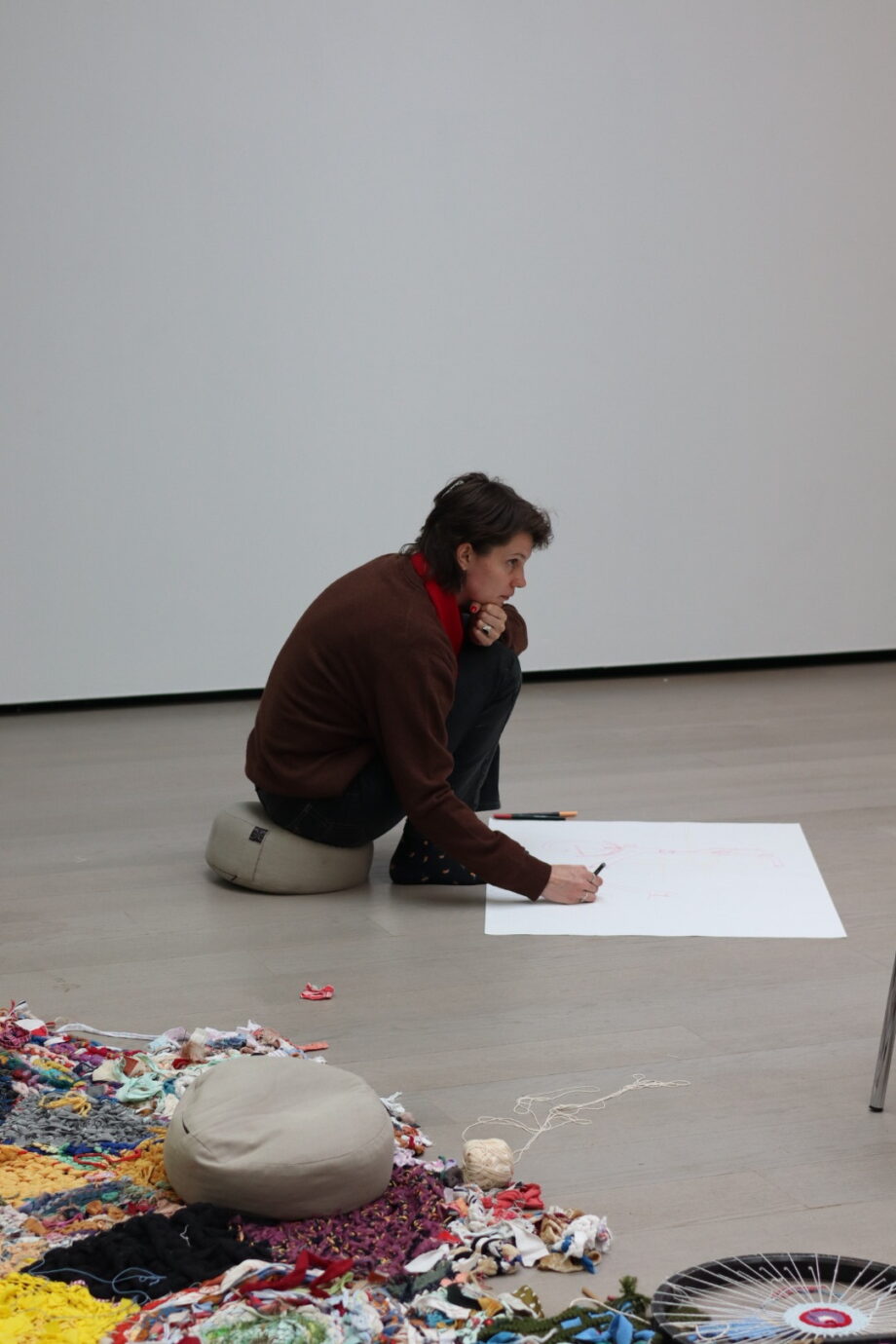
And the second year?
Now I’m creating much more independently. We have classes in artistic research and art theory, video lessons on Friday mornings, and two studio practice sessions. During studio practice, I work with dedicated tutors who coach me and help me reflect on my work. The programme is socially engaged; we learn to place our work in social and professional contexts, and we learn how to collaborate.
What is your class like?
We’re a mix of people of different ages and backgrounds. I’m almost the youngest, which is funny. My year includes, for example, a nurse, a lawyer, and a comedian. That leads to fascinating discussions in class. Sometimes we also have sessions with the full-time students, which I really enjoy.
Was there anything you had to get used to?
All the talking! But you learn quickly. The aim is to help you present your work more confidently. There is also a strong focus on collective art-making, which I hadn’t expected, I imagined art school to be much more individual.
Do you know what direction you want to take with your work?
I’m learning that I really enjoy working with my hands; drawing in particular feels very natural to me. I love the physical movement of it, and how different gestures create different lines. Materials like wood and metal also behave in their own ways. That’s what I’m experimenting with now.
In what way?
I collect different types of wood: forest wood, processed wood, recycled wood. When I collected wood from the forest, I felt conflicted: that branch might have been home to insects. That became the starting point of a research project. I began reading stories in which trees play a central role.

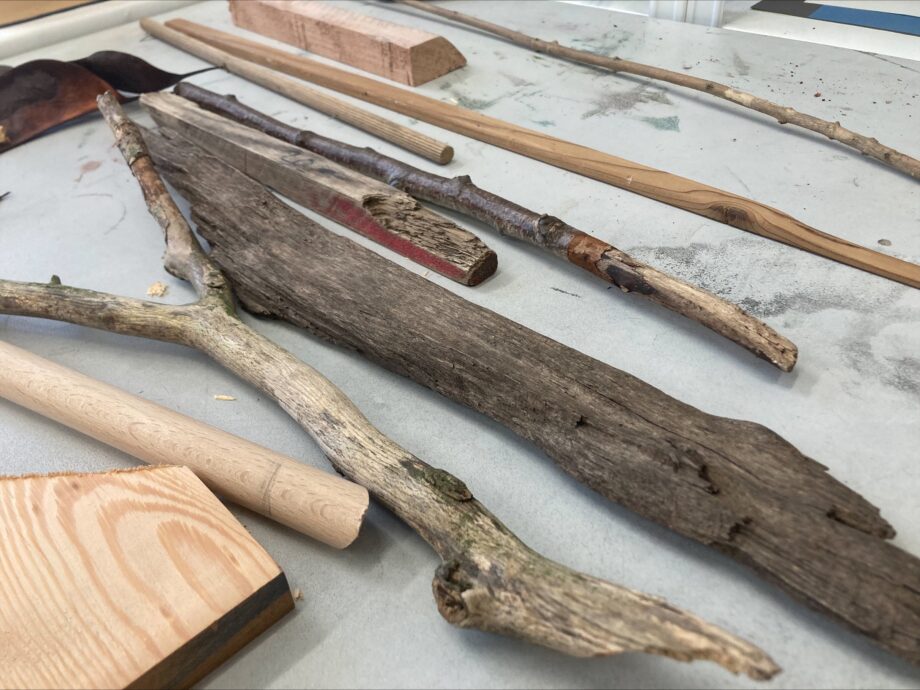
How is it to combine work and study?
It’s challenging at times. My job is important for my stability, so I can’t just let go of it. Thankfully, the programme allows for that. Many classmates are in the same situation, and the tutors are understanding. They take into account that we also work, which feels supportive.
Are you dreaming about the future yet?
Carefully, yes. I dream about having my own practice, although I don’t yet know what that would look like. I enjoy working with family; my sister, who is also a historian, and I are already thinking about a project together. She is researching how people in the 19th century coped with “nervousness” and what remedies were suggested in ads and by doctors. I find it interesting to link that to how we approach mental health today, like burnout. I can imagine her developing the theory and me creating the artistic translation for the public.
What would you recommend to people who want to pursue art but hesitate to take the step?
Visit Graduation Shows at different academies. It’s incredibly insightful: you get to see what students eventually create, you experience the atmosphere, and you can walk freely through the buildings.
The name Amalgam refers to a chemical term describing a strong bond between two different substances. The programme is designed for people with diverse backgrounds who want to use their personal knowledge and experience to build meaningful connections between art and society through new, hybrid artistic practices.
Amalgam is based on the idea that artists are not limited to the institutionalised art world. They can work anywhere they act from their artistic instinct, the human drive to create, investigate, organise, disrupt, imagine, and make meaning. Wherever people work, care, believe, think, or dream, art can take place.
